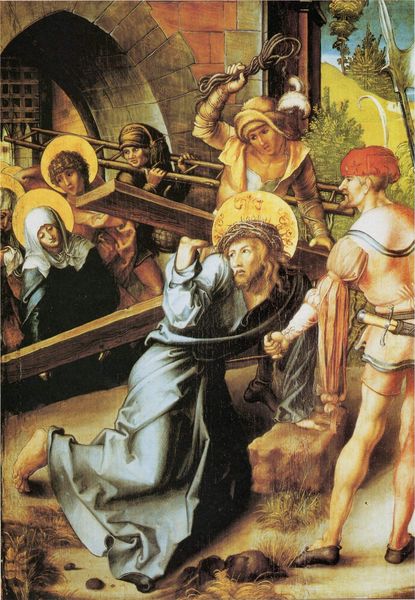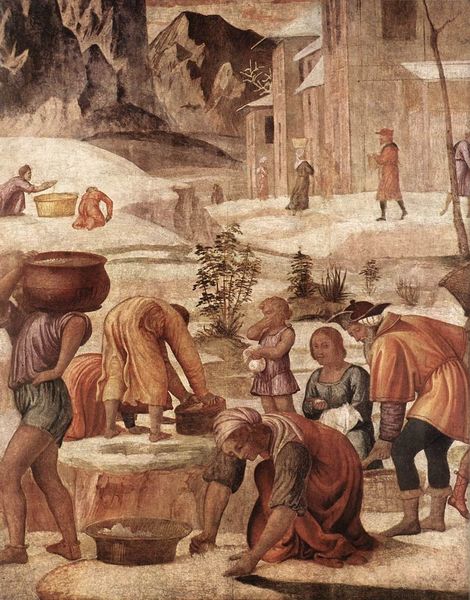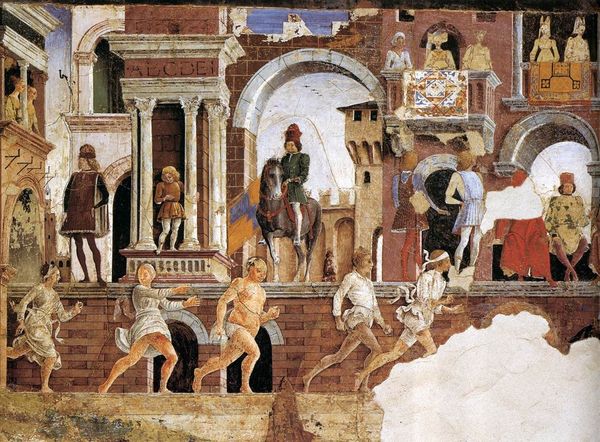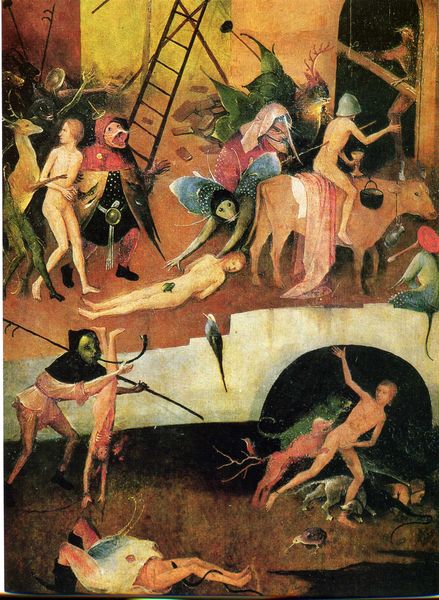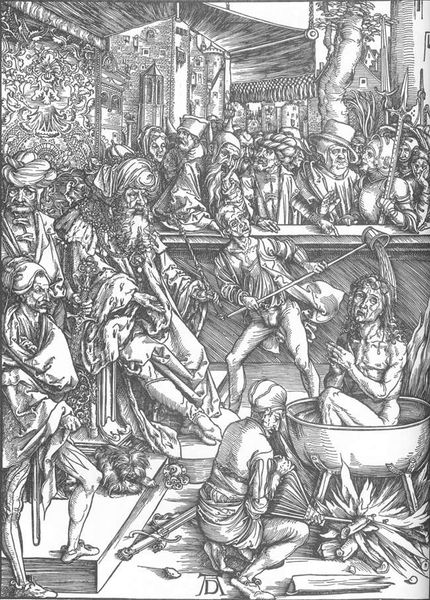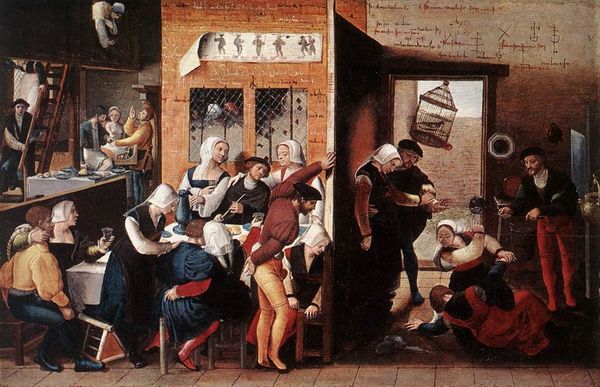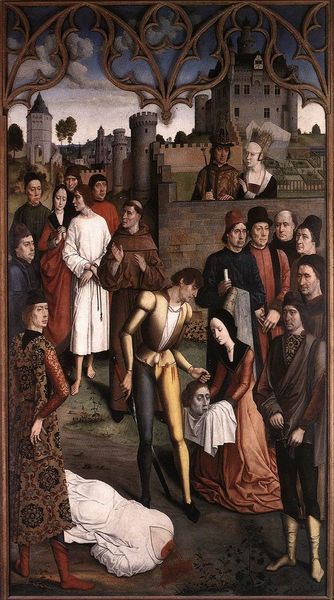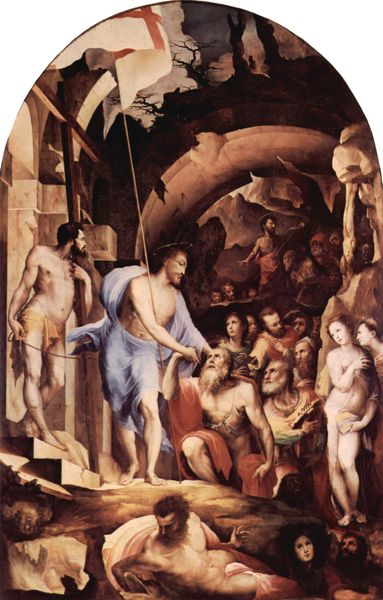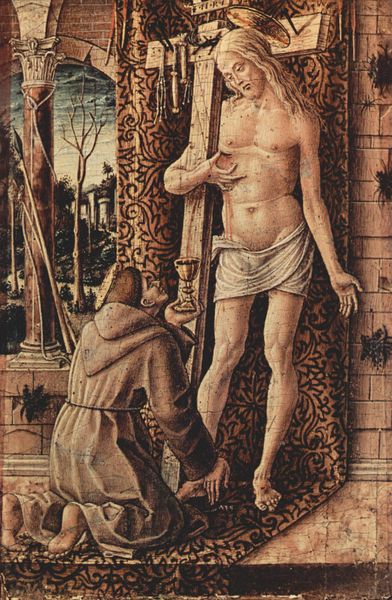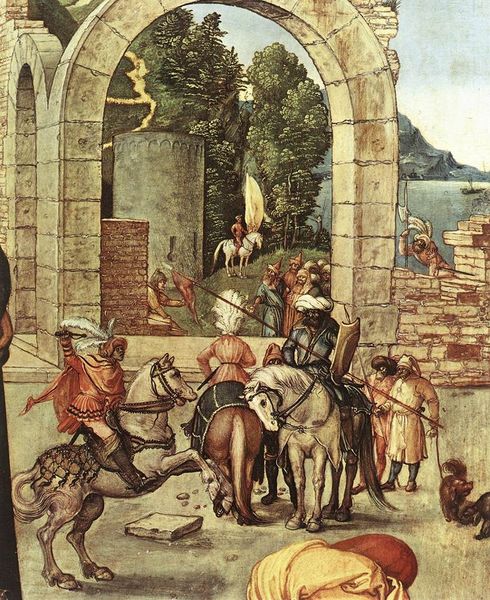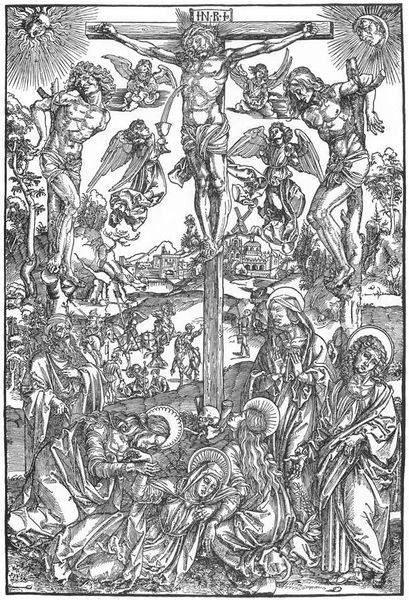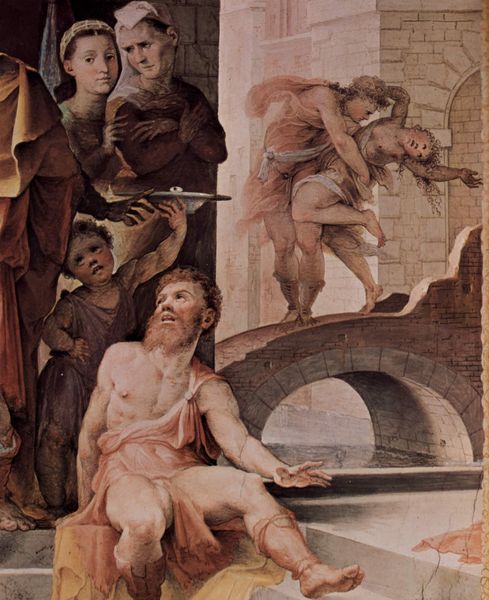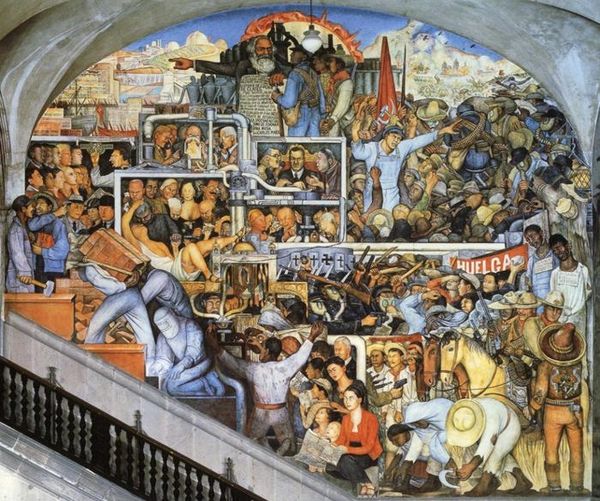
Copyright: Public domain
Curator: It strikes me immediately how theatrical this image is. "Flagellation of Christ," made around 1519 by Jerg Ratgeb. Oil paint seems to swirl within a meticulously designed architectural setting. The brutal scene somehow feels staged. Editor: It's a stage, certainly, but one pregnant with symbolic implications. Look how the figures occupy distinct spaces. Above, aloof observers; below, the tormentors enacting violence on Christ. The architectural space reinforces social and spiritual hierarchy. Curator: Yes, and notice the architectural detail—the winding staircase, the classical columns—it frames the scene in a way that monumentalizes the suffering. Even the marble seems to writhe in anguish alongside the figures. The viewer is forced into an uncomfortable proximity. Editor: Absolutely. Ratgeb's use of architectural space reminds us that even intimate, private moments of suffering, like Christ’s torment, are always embedded in larger socio-political contexts. Who commanded this? What structures enabled it? Curator: Precisely. Consider the symbols inherent in flagellation: a deliberate, ritualized infliction of pain meant to shame and dehumanize. In Ratgeb's rendering, this carries psychological weight – we perceive a collective release of violent impulse upon a scapegoat. Is this a depiction of inherent evil or societal breakdown? Editor: That question is vital, especially when we contextualize this painting within its period. The 16th century was rife with religious and political turmoil. Artists utilized biblical scenes to subtly comment on their own contemporary societal realities. Were these contemporary power structures seen to embody ritual torture? Curator: The presence of onlookers becomes deeply unsettling; they become implicit actors in the drama unfolding before us. There is a very palpable tension between suffering and indifference embedded within this very specific imagery. It serves to create continuity throughout history. Editor: Right, it challenges us to ask who observes today’s suffering—and how passively? Perhaps Ratgeb means to show the role spectators play. Curator: He forces us to see both, our historical past as witness to violence and as reflections of present societal failures. Editor: Ratgeb leaves us with lingering questions, challenging viewers, across the centuries, to confront not just faith, but structures of power and implicit participation in injustice.
Comments
No comments
Be the first to comment and join the conversation on the ultimate creative platform.
